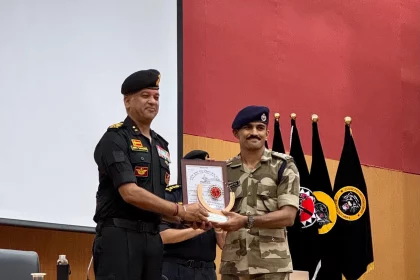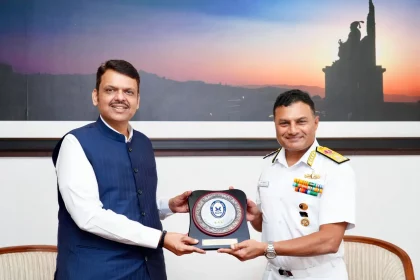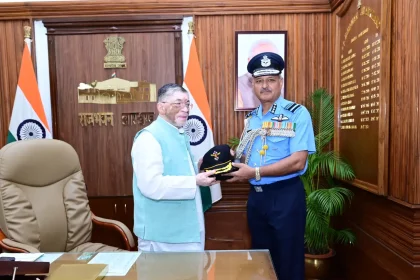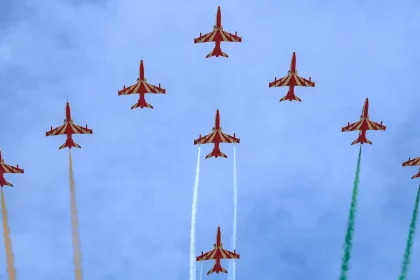Assistant Commandant Aishwarya Upadhyay Emerged as the Best Commando Amomg All Forces in Prestigious NSG Commando Course
CISF Officers Excel in India’s Toughest NSG Commando Training, Aishwarya Upadhyay Honored as Best Commando.
Army’s Lance Dafadar Baldev Chand Martyred in Udhampur Encounter
Udhampur Encounter Highlights Ongoing Security Challenges in Jammu Division.
Imphal Company Clinches Victory at IMA Inter-Company Cross Country Championship
Imphal Company Shines as Champion at IMA Dehradun, Demonstrating Endurance, Teamwork, and Officer Cadets’ Zeal.
Vice Admiral Krishna Swaminathan Meets Maharashtra CM Devendra Fadnavis to Review Maritime Security
Discussions Focus on Coastal Security and Civil-Military Cooperation in Maharashtra.
Air Marshal Surat Singh Meets Jharkhand Governor Santosh Gangwar, Discusses Security and Development
EAC Chief and Jharkhand Governor Discuss Security, Development, and Viksit Bharat Vision.
Indian Air Force’s Suryakiran Aerobatic Team Set to Thrill Hisar Skies Tomorrow
The Indian Air Force’s elite Suryakiran Aerobatic Team (SKAT) is set to enthrall spectators in Hisar on Sunday, September 21,…






